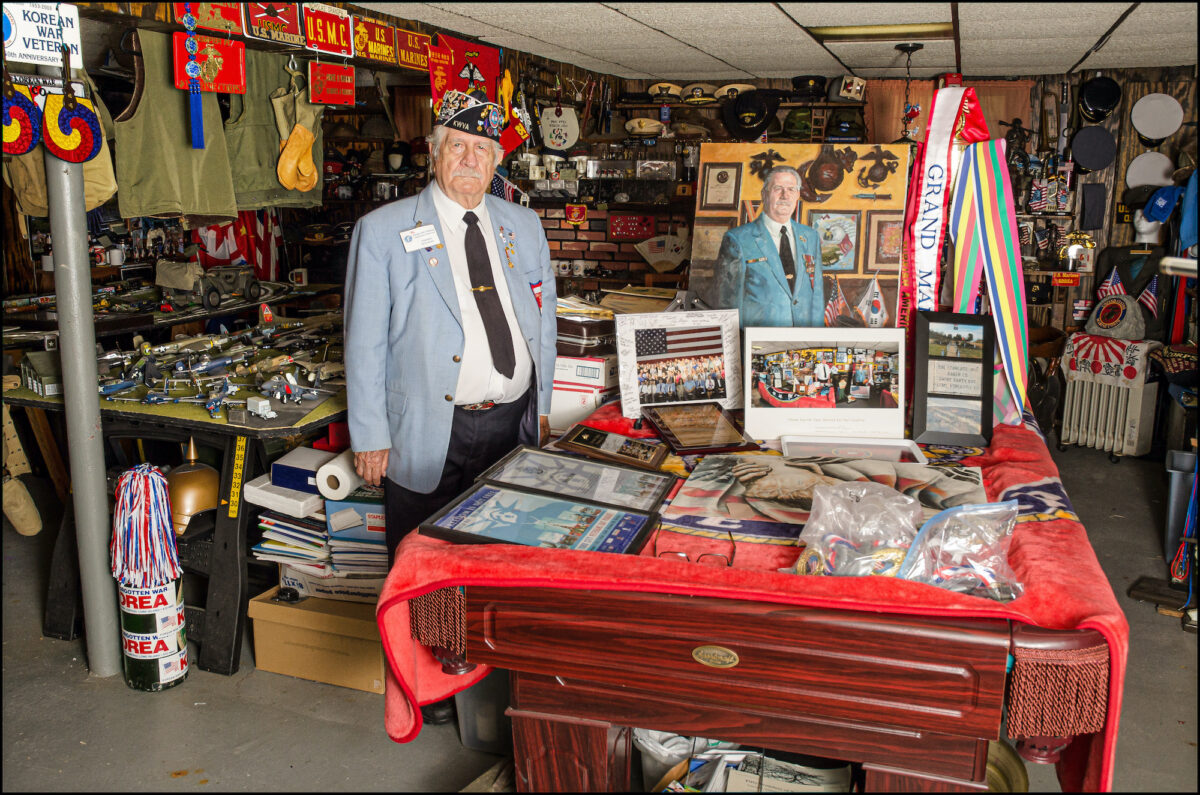World War II Veteran
Editor’s note: Stanley Feltman passed away on September 23, shortly before this issue went to press.
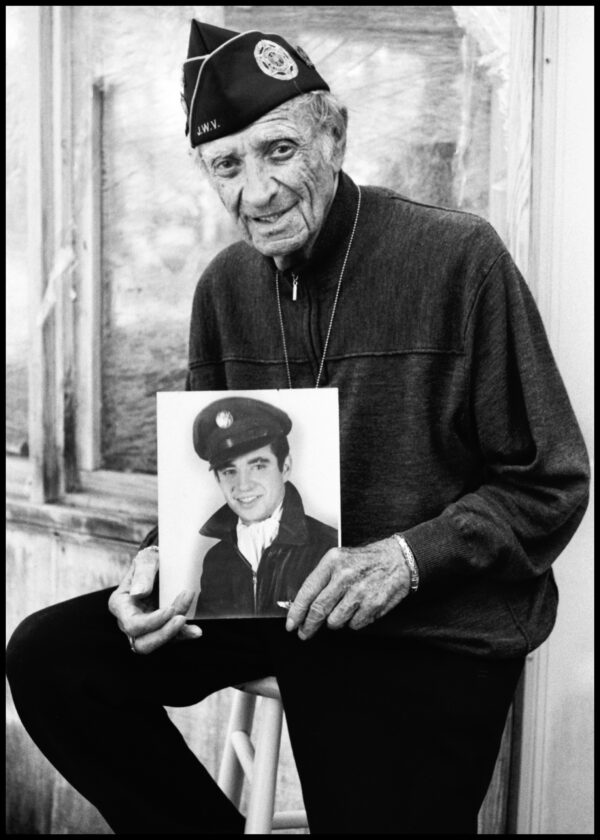
In 1945, at age 19, Stanley Feltman was a tail gunner in a B-29 for the U.S. Army Air Corps. He had flown about 15 successful bombing missions in the South Pacific, but come mission number 16, he wasn’t so lucky.
His plane, containing 11 crew members, was shot down by a Zero fighter aircraft of the Imperial Japanese Navy. All 11 men were able to escape the wreckage by inflating a dinghy and paddling away from the aircraft before it sank minutes later.
The dinghy was designed for six. That meant six were able to sit inside; but five, including Feltman, had to hang onto a rope that ran around the perimeter, with their bodies waist-deep in the water.
And then there were the sharks. They had some repellent on hand, but it dissipated after time. At one point, another airman who was hanging on lost his grip and slipped into the shark-infested water. Feltman dived after him and brought him back to the surface. This act of bravery would earn Feltman the Bronze Star.
Several hours later, a submarine spotted them. However, its crew was on a mission elsewhere, and could not take them aboard. The submarine’s crew wired their coordinates to an aircraft carrier, which sent a PBY seaplane to pick up the stranded airmen after a total of about eight hours in the water.
When the United States entered the war on December 7, 1941, Feltman was only 15 and couldn’t enlist, although he wanted to. However, Americans could enlist at 17 with parental consent, which was his plan. Upon his 17th birthday, he told his parents of his intention to volunteer.
Eventually, Feltman found himself in the tail of a B-29 in the South Pacific. His job was to fire at oncoming enemy planes. Often, these were flown by Kamikaze pilots, who would purposely crash their explosive-laden planes into American aircraft carriers.
Feltman recalled his first encounter with the enemy. “I remember somebody saying, ‘There’s planes coming in at six o’clock,’” he said. “I sighted on a plane that I saw coming in. I didn’t know if it was the same plane that they saw because usually they had five, six planes at one time come at you. I fired; I saw the plane blow up, so I figured it has to be a Kamikaze plane. It just exploded.”
Feltman was only 18 at the time, and the youngest member of the crew. After he hit his target, he shouted, “I got him! I got him! I got him!”
Today, at 95, when Feltman thinks about those battles, he’s not so enthusiastic. He’s certain he shot down eight Japanese pilots and thinks there may have been two more.
“I never felt right by taking a life,” he said. “When you’re shooting planes down, you’re taking a life. That’s all. There’s nothing big about that.”
Korean War Veteran
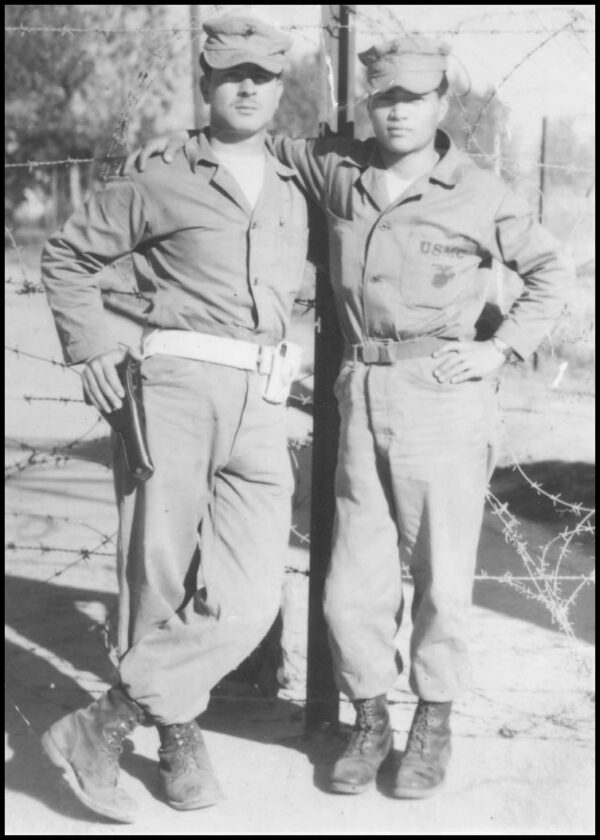
On June 25, 1950, North Korean soldiers crossed the 38th parallel, and the Korean War began.
Sal Scarlato was 17 at the time. He had known of a few boys from his Brooklyn neighborhood who were killed in combat early on, but this didn’t stop him and his pals from enlisting in the Marines after they turned 18.
Private First Class Scarlato landed at Incheon on April 10, 1952. He was 19 and in the infantry.
“All of a sudden, we got hit with small-arms fire and mortar fire,” said Scarlato. “We were firing like crazy. I had the runs. I urinated. I was crying. A couple of guys got hit.”
One night, Scarlato had outpost duty along the 38th parallel. “That night, the CCF (Chinese Communist Forces) really gave us a welcome,” he said. “When they came, I didn’t fire my weapon right away. I froze. So, the guy next to me—actually, he was my squad leader—hit me in the helmet. He said, ‘You better start firing that weapon.’ A couple of minutes later, he got hit in the belly. He fell right on top of me. And when the corpsman came, he said, ‘Give me your hand.’”
Scarlato applied pressure to the squad leader’s liver, which was protruding from his body. Right then and there, he died. “I cried like a baby,” he said. “After this, I was very bitter. I kept saying to myself, ‘What the hell am I doing here?’ And my officers always said, ‘You’ll find out. You’ll find out eventually what you’re doing here.’”
Scarlato witnessed countless casualties, and then, in July 1952, became one. Once again, Scarlato’s unit came under attack by the CCF. An enemy combatant tossed a grenade at him and two other Marines. It exploded, killing one of them and wounding the other two. Scarlato suffered leg, neck, and hand wounds, and a concussion.
A corpsman gave him a shot of morphine and sent him via jeep to an aid station. From there, he was flown via chopper to a hospital ship. He thought this was his ticket home, but the Marines still needed him. Being sent back to his unit made Scarlato bitter. “I hated everybody,” he said, even his South Korean allies. Scarlato once even spat on a soldier when he came close.
Scarlato soon discovered that the officers were correct, and he did indeed find out why he was there. On patrol one day, Scarlato’s unit came upon a small village where several civilians had been killed.
“There was a little boy, maybe 5, 6 years old—he had his hand blown off.” Scarlato immediately picked the boy up and put his severed hand in his own pocket. He bandaged the end of the boy’s arm and a corpsman arrived. The child screamed in pain the entire time. They flagged down a medical jeep and drove to a nearby orphanage that had medical staff.
The nurses placed the boy on a table. Scarlato and the corpsman turned and walked out, having done all they could. Then, Scarlato remembered he still had the child’s hand in his pocket. He stepped back inside, only to find out the boy had died.
This was the defining moment. Out of all the death and carnage Scarlato saw, this was the worst. Now, he knew that the reason he was there was “to save these people’s lives. Before that, I didn’t understand.”
At 88, Scarlato is still sharp as a tack and keeps up with the news, including about current U.S.–North Korea relations. He’s a member of the Korean War Veterans Association, and regularly raises money for Korean War monuments.
Vietnam War Veteran
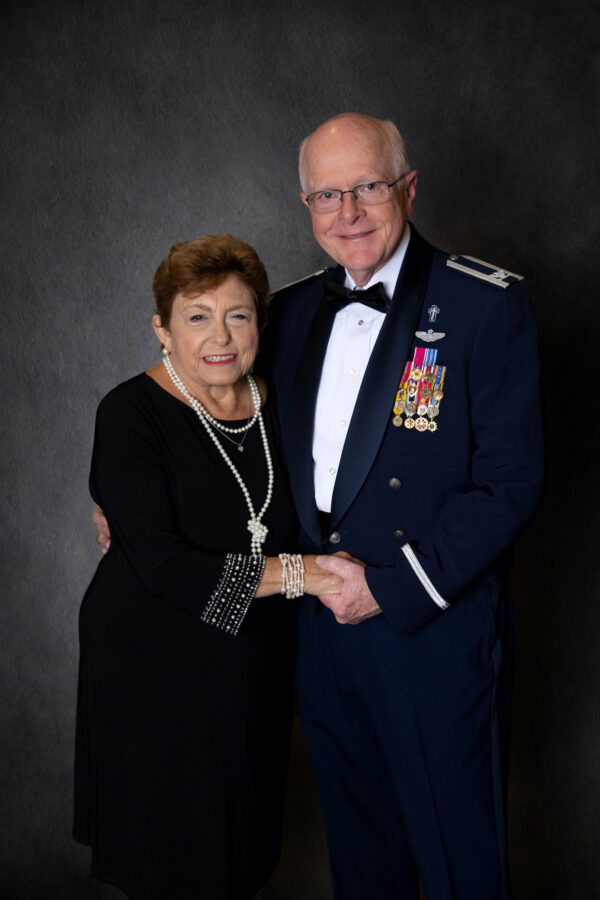
It was late 1972, and as the holiday season approached, Colonel Robert Certain, an Air Force B-52 navigator, was preparing to return stateside from war-torn Vietnam. But just days before his departure date, this much-anticipated plan was abruptly changed. Instead of returning home, Certain was now assigned to a large-scale flying mission—one that would radically change his life.
As a navigator, Certain explained that his job was not only to get to the target on time, but also to ensure the task was accomplished in an equally prompt and precise manner. The logistics were critically important for this mission, he said, because he and his crew would be flying toward Hanoi, deep into what was then known as enemy territory. Even so, the newly assigned mission initially got off to a good start and seemed to go according to plan. And then, it didn’t.
When Certain and his crew had almost reached their target, the plane suddenly sputtered into a free fall. They’d been hit. With no time to waste, Certain knew there was only one way to survive the doomed flight—eject into enemy territory. And so, Certain explained, he wasn’t surprised when he was captured, along with another member of the crew. “We were just a few miles north of Hanoi,” Certain said of their precarious landing site, estimating it was within 10 or 20 kilometers of their original target.
Certain would eventually end up in the infamous prison sarcastically dubbed by Americans at that time as the “Hanoi Hilton.” But first, he was forced to endure hours of relentless interrogation. Then, he and his fellow captive crew mate were paraded in front of cameras at an international presser.
Though the North Vietnamese may have been “showing off” their catch of the day, Certain believes this exposure protected him and the other new captures from the type of well-reported, horrendous conditions earlier prisoners were subjected to. After about 10 days, his tiny, shared cell was upgraded to a much larger one, and the prisoners were eventually allowed to gather together on Sundays for a service of sorts.
If the watchful eye of the media played a part in the type of treatment Certain and other newer captives received as prisoners, undoubtedly, so did the actions of the American government. At that time, the United States was in dedicated negotiations to end its involvement in the war. After the signing of the Paris Peace Accords made it official, Certain once again began planning for his return home. This time, his plans were undeterred, and Certain was set free on March 29, 1973.
But this isn’t where the story ends. Certain, who was 25 when he was captured, returned to the United States and hit the ground running, but on a much different path. In 1976, Colonel Certain became Father Certain, an ordained Episcopalian priest. He went on to earn his Doctor of Ministry degree in 1999, and as a member of the U.S. Air Force Reserves, he served as chaplain for a number of U.S. bases, including what is now Andrews Joint Base. When former President Gerald Ford passed away in 2006, it was Father Certain who presided over his graveside services.
Certain retired from active-duty service in 1977 but went on to serve in the Reserves until 1999. His exemplary service earned him a number of prestigious honors, including the Purple Heart, Bronze Star, and Distinguished Flying Cross medals, to name just a few. He has also served as a CEO, director, or board member for numerous organizations and governmental committees, such as the Defense Health Board and the Pentagon Task Force on the Prevention of Suicide by Members of the Armed Services. Notably, he remains active as a board member of the Distinguished Flying Cross Society, comprised of medal recipients. Over the years, his 2003 autobiography, “Unchained Eagle,” has accumulated a prestigious—and rare—five-star average rating on Amazon.
Yet despite his many successes, Certain admits to one failure. “I’ve tried to retire,” he said with humor in his voice, “but I’ve been a failure at it.” Officially though, Certain is indeed now classified by the military as retired, and lives with his wife of many years, Robbie, in Texas.
Gulf War Veteran
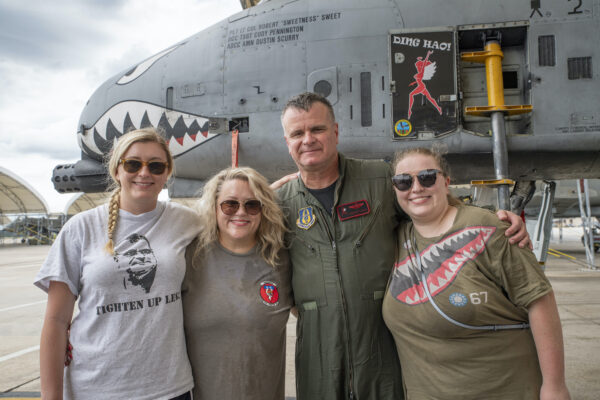
It was February 1991, and U.S. Air Force pilot, Lieutenant Colonel Robert Sweet, was on his 30th mission in Desert Storm. The goal, simply put, was to eliminate enemy targets. However, his arrival at the targeted area was met with such heavy fire, he was ordered to leave because, as he explained in a press statement later, “if the target area is too hot, you have to leave. It’s not time to be a hero.”
As he and his lead flight captain, Stephen Phillis, made their way out of the area, he caught sight of what he described as a “pristine array of (enemy) tanks that had not been hit.” He found this downright shocking, he said, “because by that point, everything had been bombed for the past 30 days.” After Sweet began to attack the tanks, an exchange of fire erupted, and the A-10 Thunderbolt he was piloting was hit from behind.
He attempted to keep the damaged plane in the air, but he quickly realized it was not salvageable, and in order to survive, he would have to eject into enemy territory. “I tried a couple of things, and basically, it wasn’t going to work, so I punched out,” Sweet said, explaining how he landed face-to-face with more than a dozen irate Iraqi soldiers, southwest of Basra, Iraq. He was captured and held prisoner for 19 days under brutal conditions, including beatings, starvation, and exposure to disease.
It was clear, he said, that he now had to fight to keep himself both physically and emotionally strong. But it was also clear that the military had prepared him well beforehand for this type of situation. “There were very few surprises,” Sweet said of his time as a prisoner. “The SERE (Survival Evasion Resistance and Escape) we have is outstanding,” he said of the U.S. military’s training. “There were very few surprises in the jailhouse. I knew what to expect.”
And although his expectation included casualties, Sweet still found himself reeling after learning that Phillis had been killed in action. “I had survivor’s guilt, and it took me a long time to get over that,” he said.
Sweet spent 19 days in captivity before being released as part of a prisoner exchange. But it wasn’t without some long-term aftereffects. Most notably, he realized the importance of making good decisions under pressure and taking life as it comes. “Bloom where you’re planted,” he advised. In the military, that often includes assignments to undesirable locales. “Make the most of them and move on,” he said.
And that’s exactly what Sweet himself has done. After spending 20 years on active duty and 13 more as a reservist, Sweet retired in June 2021, making him America’s last POW to be actively serving in the Air Force. After this acknowledgement and congratulations at his retirement ceremony, General Charles Q. Brown captured the sentiment of the nation when he said simply, “We thank you for all you’ve done.”
Dave Paone is a Long Island-based reporter and photographer who has won journalism awards for articles, photographs, and headlines. When he’s not writing and photographing, he’s catering to every demand of his cat, Gigi.
Joni Williams started her career as a real estate reporter. Magazine writing soon followed, and with it, regular gigs as a restaurant and libations reviewer. Since then, her work has appeared in a number of publications throughout the Gulf Coast and beyond.

